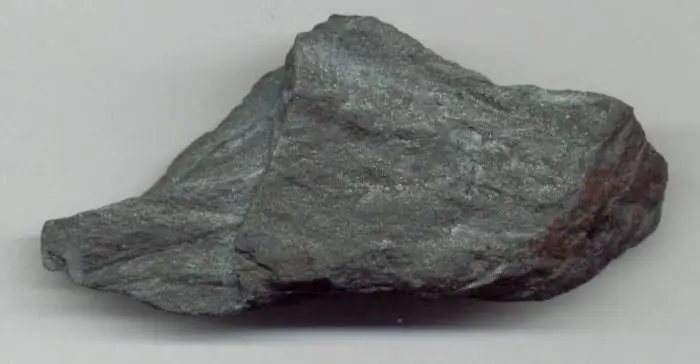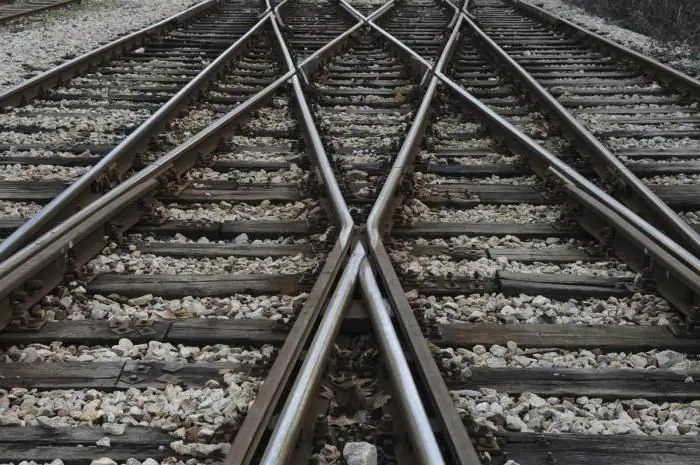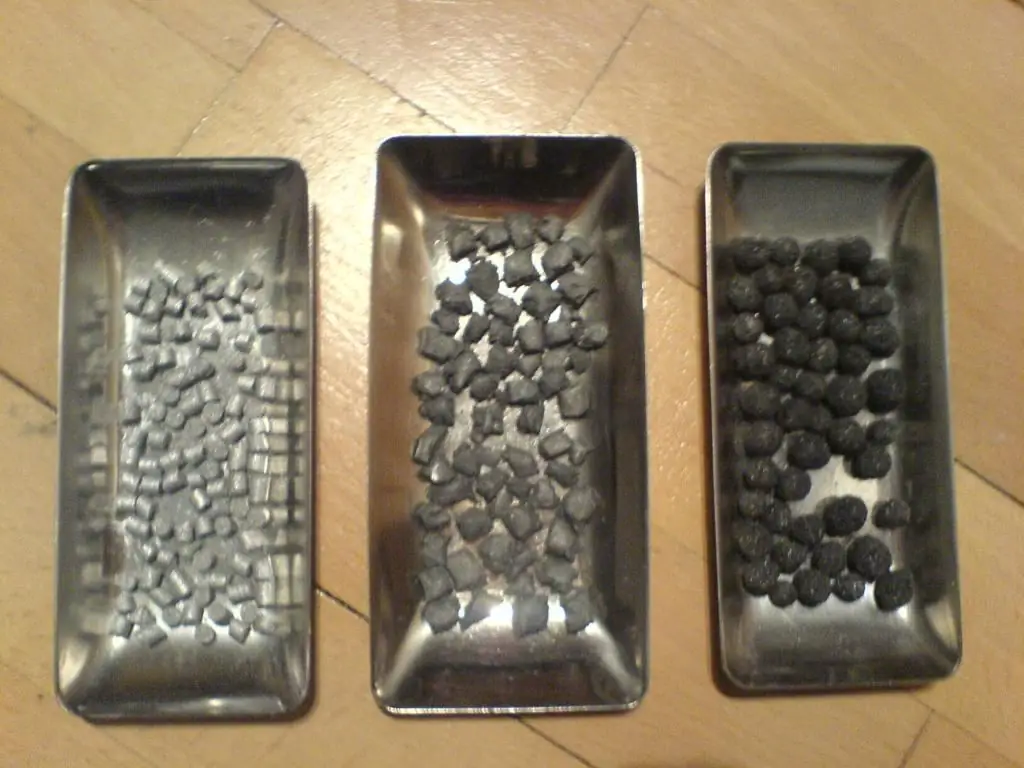2026 Author: Howard Calhoun | [email protected]. Last modified: 2025-01-24 13:10:26
A pyrotechnic composition is a substance or mixture of components designed to produce an effect in the form of heat, light, sound, gas, smoke, or a combination thereof, as a result of self-sustaining exothermic chemical reactions that take place without detonation. Such a process does not depend on oxygen from external sources.
Classification of pyrotechnic compositions

They can be divided by action:
- Fiery.
- Smoke.
- Dynamic.
The first two groups can be subdivided into smaller types.
Fiery: illuminating, signal night, tracer and some incendiary.
The smoke group includes compositions for daytime signaling and masking (fog).
Main types of pyrotechnics
The above effect (light, sound, etc.) can be created using these components:
- Powder flash - burns very quickly, produces explosions or bright bursts of light.
- Gunpowder - burns slower than powder, emits a large amount of gases.
- Solid propellant - produces a lot of hot vapors used as sources of kinetic energy for rockets and projectiles.
- Pyrotechnic initiators - produce large amounts of heat, flames or hot sparks used to ignite other compositions.
- Ejection Charges - burn quickly, produce a lot of gas in a short time, used to release payloads from containers.
- Explosive charges - burn quickly, produce a large amount of gas in a short time, used to crush the container and dump its contents.
- Smoke compositions - burn slowly, produce fog (plain or colored).
- Delay trains - blazes at a constant quiet speed, used to introduce delays into the fire reserve.
- Pyrotechnic heat sources - emit a large amount of heat and practically do not spread gases, slow burning, often thermite-like.
- Sparklers - produce white or colored sparks.
- Flashes - burn slowly, create a large amount of light, used for lighting or signaling.
- Colorful fireworks compositions - produce light, white or multi-colored sparks.
Application

Some technologies of pyrotechnic compositions and products are used in industry and aviation to generate large volumes of gas (for example, in airbags), as well as in variousfastenings and in other similar situations. They are also used in the military industry when large amounts of noise, light or infrared radiation are required. For example, decoy rockets, flares, and stun grenades. A new class of reactive material compositions is currently being researched by the military.
Many pyrotechnic compounds (especially those involving aluminum and perchlorates) are often very sensitive to friction, shock and static electricity. Even as little as 0.1 to 10 millijoules of spark can cause certain effects.
Gunpowder

This is the famous black powder. It is the earliest known chemical explosive, consisting of a mixture of sulfur (S), charcoal (C) and potassium nitrate (s altpeter, KNO 3). The first two components act as a fuel, and the third is an oxidizer. Because of its incendiary properties and the amount of heat and gas it releases, gunpowder is widely used in the manufacture of propellant charges in firearms and artillery. In addition, it is used in the manufacture of rockets, fireworks and explosive devices in quarrying, mining and road construction.
Indicators

Gunpowder was invented in China in the 7th century and spread across most of Eurasia by the end of the 13th century. Originally developed by the Taoists for medicinal purposes, the powder was used for warfare around 1000 AD.
Gunpowder is classified intoas a small explosive due to its relatively slow decomposition rate and low brisance.
Explosive Power
Ignition of gunpowder packed behind the projectile creates enough pressure to cause the muzzle to fire at high speed, but not powerful enough to burst the barrel of a gun. Thus, gunpowder is a good fuel, but it is less suitable for destroying stone or fortifications due to its low explosive power. By transferring enough energy (from the burning substance to the mass of the cannonball, and then from it to the target via impact ammunition), the bomber can eventually overwhelm the enemy's fortified defenses.
Gunpowder was widely used to fill shells and was used in mining and civil engineering projects until the second half of the 19th century, when the first explosives were tested. The powder is no longer used in modern weapons and industrial applications due to its relatively low effectiveness (compared to newer alternatives such as dynamite and ammonium nitrate or fuel oil). Today gunpowder firearms are mostly limited to hunting, target shooting.
Pyrotechnic heat source
Pyrotechnic compositions are a device based on combustible substances with a suitable igniter. Their role is to produce a controlled amount of heat. Pyrotechnic sources are usually based on thermite-like (or composition-retarding) fuel oxidizers with a low burning rate,high heat output at the desired temperature and little or no gas formation.
They can be activated in several ways. Electric matches and impact caps are the most common.
Pyrotechnic heat sources are often used to activate batteries, where they serve to melt the electrolyte. There are two main types of design. One uses a fuse strip (containing barium chromate and powdered zirconium metal in ceramic paper). Thermal pyrotechnic granulation compositions run along its edge to initiate combustion. The strip is usually started with an electric igniter or plug using current.
The second design uses a central hole in the battery pack into which a high-energy electric igniter releases a mixture of combustible gases and incandescent lamps. The design with a central hole can significantly reduce the activation time (tens of milliseconds). For comparison, we note that in devices with an edge strip, this indicator is hundreds of milliseconds.
Enabling a battery can also be done with a shotgun-like impact primer. It is desirable that the source of exposure be without gas. Typically, the standard composition of pyrotechnic mixtures consists of iron powder and potassium perchlorate. In weight ratios, these are 88/12, 86/14 and 84/16. The higher the perchlorate level, the greater the heat output (nominally 200, 259 and 297 calories/gram). The size and thickness of iron-perchlorate tablets have little effect on the burning rate, but they doeffects on density, composition, particle size and can be used to adjust the desired heat release profile.
Another composition used is zirconium with barium chromate. Another mixture contains 46.67% titanium, 23.33% amorphous boron, and about 30% barium chromate. Also available are 45% tungsten, 40.5% barium chromate, 14.5% potassium perchlorate, and 1% vinyl alcohol and binder acetate.
Reactions to form intermetallic components of pyrotechnic compositions, such as zirconium with boron, can be used when gasless operation, non-hygroscopic behavior and independence from ambient pressure are desired.
Heat source

It can be a direct part of the pyrotechnic composition, for example, in chemical oxygen generators such a component is used with a large excess of oxidizer. The heat released during combustion is used for thermal decomposition. With respect to cold burning, compositions are used to produce colored smoke or to spray an aerosol such as pesticides or CS gas, providing the heat of sublimation of the desired compound.
The phase retardation component of the composition, which together with the combustion products forms a mixture with one distinct phase transition temperature, can be used to stabilize the flame height.
Materials

Pyrotechnic compositions are usually homogenized mixtures of smallfuel particles and oxidizers. The former may be grains or flakes. Generally, the higher the surface area of the particles, the higher the rate of reaction and combustion. For some purposes, binders are used to turn the powder into a solid material.
Fuel

Typical types are based on metallic or metalloid powders. The composition may indicate several different types of fuel. Some can also serve as binders.
Metals
Common fuels include:
- Aluminum is the most common fuel in many classes of mixtures, as well as a regulator of combustion instability. High-temperature flame with solid particles that interfere with the appearance of dyes, reacts with nitrates (except ammonium) to form oxides of nitrogen, ammonia and heat (reaction slow at room temperature, but violent above 80 ° C, may self-ignite).
- Magnalium is an aluminum-magnesium alloy that is more stable and less expensive than a single metal. Less reactive than magnesium, but more flammable than aluminum.
- Iron - makes golden sparks, a commonly used element.
- Steel is an alloy of iron and carbon that produces branching yellow-orange sparks.
- Zirconium - Produces hot particles useful for flammable mixtures, such as NASA's standard initiator, and for suppressing combustion instability.
- Titanium - produces hot pyrotechnics and compounds, increasessensitivity to shock and friction. Sometimes a Ti4Al6V alloy is used which produces slightly brighter white sparks. Together with potassium perchlorate, it is used in some pyrotechnic igniters. The coarse powder produces beautiful branching blue-white sparks.
- Ferrotitanium is an iron-titanium alloy that creates bright sparks used in pyrotechnic stars, rockets, comets and fountains.
- Ferrosilicon is an iron-silicon substance used in some blends, sometimes replacing calcium silicide.
- Manganese - used to control the burning rate, for example, in compositions with a delay.
- Zinc - used in some smoke compositions along with sulfur, which is used as an amateur fuel for rockets, as well as in pyrotechnic stars. Sensitive to moisture. May ignite spontaneously. Rarely used as the main fuel (with the exception of smoke compositions), it can be used as an additional component.
- Copper - used as a blue dye with other species.
- Brass is an alloy of zinc and copper used in some firework formulas.
- Tungsten - used to control and slow down the burning rate of compositions.
It is worth noting that it is dangerous to make pyrotechnic compositions with your own hands.
Recommended:
Bronze is an alloy composition. The chemical composition of bronze

Many people know about bronze only that sculptures and monuments are cast from it. In fact, this metal is undeservedly deprived of popular attention. After all, it was not in vain that in the history of mankind there was even a Bronze Age - a whole era during which the alloy occupied a dominant position. The qualities possessed by an alloy of copper and tin are simply indispensable in many industries. It is used in the manufacture of tools, in mechanical engineering, casting church bells, and so on
Types of cast iron, classification, composition, properties, marking and application

The types of cast iron that exist today allow a person to create many products. Therefore, we will talk about this material in more detail in this article
Steel: composition, properties, types and applications. Composition of stainless steel

Today, steel is used in the vast majority of industries. However, not everyone knows that the composition of steel, its properties, types and applications are very different from the production process of this product
Foam vapor permeability: composition, properties, structure, classification, application and safety

The thickness and vapor permeability of the foam - this is not all you need to know when buying material. It is important to take an interest in sound and windproof properties. If the walls are insulated with foam, they will not need wind protection. The soundproofing of the building will be improved. Thus, the soundproofing properties are explained by the cellular structure
Turning tool for metal: components, classification and purpose

One of the most popular tools in metal machining is a cutter. It allows you to perform many technological operations. In this article, we will consider a turning tool for metal, its constituent elements, classification and purpose

